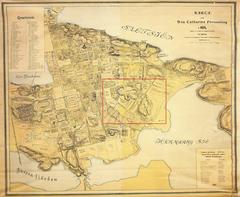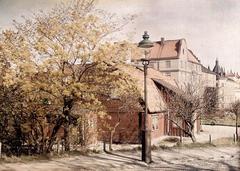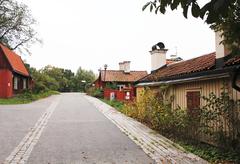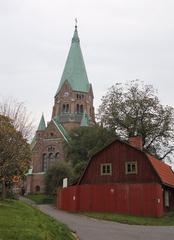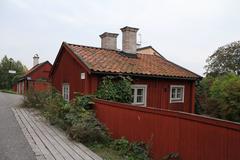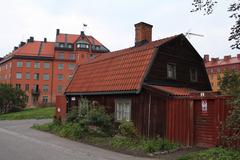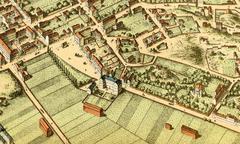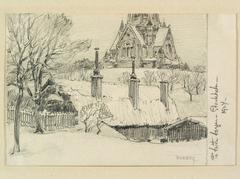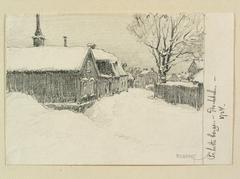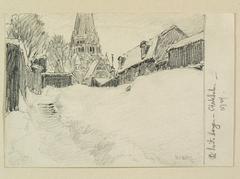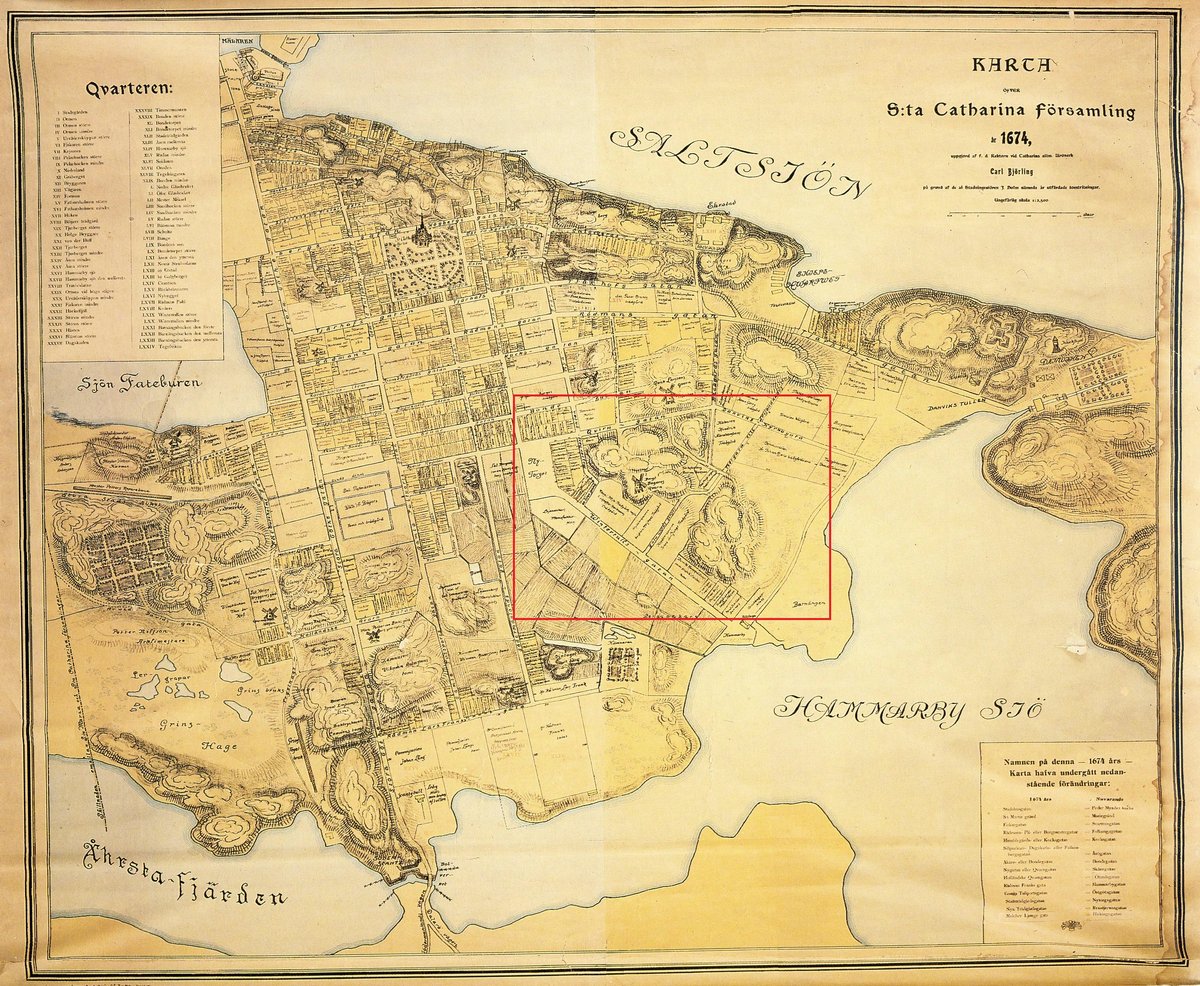
Vita Bergen Stockholm Visiting Hours, Tickets, and Travel Guide
Date: 14/06/2025
Introduction to Vita Bergen
Vita Bergen, known as the “White Mountains,” is a storied park and historic district in Stockholm’s vibrant Södermalm area. Renowned for its dramatic hills, preserved 18th- and 19th-century wooden houses, and sweeping city views, Vita Bergen stands as a living monument to Stockholm’s working-class heritage, social reform, and ongoing urban transformation. Visitors can wander winding paths, admire neo-Gothic Sofia Church, and enjoy modern cultural events like open-air theater and summer concerts, all while discovering the park’s deep historical roots. Its proximity to the SoFo district and Katarina Church makes Vita Bergen a serene yet integral part of Stockholm’s cultural landscape (Stockholmskällan; Visit Stockholm; Petit Futé).
Table of Contents
- Introduction
- Historical Overview
- Park Layout and Natural Features
- Cultural and Historical Landmarks
- Visiting Vita Bergen
- Recreational Facilities and Activities
- Community and Cultural Life
- Practical Tips for Visitors
- Frequently Asked Questions (FAQ)
- Conclusion
- References
Historical Overview
Early Origins and Name
Vita Bergen’s name, meaning “White Mountains,” refers to the pale bedrock outcrops that define the landscape (Stockholmskällan). Documented since at least 1819, the area stood out for its rugged terrain in contrast to Stockholm’s more developed neighborhoods. The first wooden walkways and staircases, like Bergssprängartrappan, were built in the 19th century to help residents navigate the steep slopes.
Settlement and Social Conditions
By the 18th and 19th centuries, poverty-stricken working-class families settled in Vita Bergen, creating a patchwork of simple wooden houses tucked into the rocky hills. The district became notorious for overcrowding and poor sanitation, with its hardships and resilience famously depicted in August Strindberg’s Röda rummet (“The Red Room,” 1879) (Kasadoo). Many of the original wooden houses, especially along Bergsprängargränd, remain preserved and managed by AB Stadsholmen, offering rare insight into pre-industrial Stockholm (The Hidden North).
Elsa Borg and Social Reform
Elsa Borg (1826–1909), known as the “Angel of Vita Bergen,” pioneered social work in the area by founding the Bibelkvinnohemmet (Bible Home for Women) at Skånegatan 104 in 1876. She provided shelter and aid to women and children facing homelessness and hardship, later expanding her initiatives to include orphanages and training programs (SKBL). Borg’s legacy is commemorated by a statue in the park.
Urban Transformation and Preservation
With Stockholm’s modernization in the early 20th century, many poor districts were redeveloped, but community activists like Anna Lindhagen helped preserve parts of Vita Bergen’s historic wooden quarters. The park, known as Vitabergsparken, was officially established to provide green space for local residents, and today, the preserved cottages and Sofia Church remain protected as part of the city’s cultural heritage (Wikipedia).
Park Layout and Natural Features
Vitabergsparken is divided into two main sections, each offering distinct charm and amenities (parker.stockholm).
Western and Eastern Hills
- Western Hill: Features the grand Sofia Church, open lawns perfect for picnics, and the colorful “Blomsterberget” (Flower Hill).
- Eastern Hill: Maintains a natural atmosphere with rugged rocks, winding woodland paths, the open-air theater (friluftsteater), music pavilion, a large playground, and the Barnängens koloniområde allotment gardens.
Flora and Fauna
The park is home to ancient lindens, magnolias, birches, and maples. Its varied landscape supports urban wildlife, making it ideal for birdwatching and nature walks.
Cultural and Historical Landmarks
- Sofia Church (Sofia kyrka): Neo-Gothic church completed in 1906, prominent on the western hill and a frequent concert venue.
- Groens Malmgård: A 17th-century manor house surrounded by rare magnolia trees and the Elsa Borg statue.
- Historic Wooden Houses: Preserved along Bergsprängargränd and Mäster Pers gränd, these cottages reflect the area’s working-class roots.
- Elsa Borg Statue: Honoring the pioneering social reformer’s work in Vita Bergen.
Visiting Vita Bergen
Visiting Hours and Tickets
Vita Bergen is open to the public year-round, from dawn until dusk. No ticket or entrance fee is required. The open-air theater hosts free summer performances; check local event listings for details.
Accessibility
While many main paths are paved, some slopes and stairs can be steep and uneven. Wheelchair access is limited in parts; comfortable walking shoes are advisable.
Getting There
- Metro: Medborgarplatsen station (10-min walk)
- Bus: Several lines serve nearby stops
- Parking: Limited; public transport is recommended
Nearby Attractions
- Katarina Church: Historic church within walking distance
- SoFo District: Trendy area with boutiques and cafés
- Nytorget Square: Lively area for dining and nightlife
Events and Guided Tours
Vitabergsparken regularly hosts open-air theater, music festivals, and the annual Magnoliapriset ceremony (Sofia Hembygdsförening). Guided tours are available seasonally—check with Stockholm tourism offices.
Photographic Spots
- Sofia Church hilltop: Panoramic city views
- Blomsterberget: Vibrant seasonal flowerbeds
- Historic wooden houses: Picturesque streetscapes
Recreational Facilities and Activities
- Open-Air Theater (Friluftsteater): Hosts free summer performances in a natural amphitheater setting (Kasadoo).
- Music Pavilion: Venue for concerts and local gatherings.
- Playgrounds: Modern, inclusive play areas for children.
- Dog Park: Fenced area for pets.
- Allotment Gardens: Colorful gardens displaying Stockholm’s urban horticulture traditions.
- Seasonal Café: Open in summer, offering refreshments.
- Winter Activities: Sledding on the park’s slopes is popular during snowy months.
Community and Cultural Life
Vita Bergen has always been a center for community, resilience, and cultural vibrancy. Today, it continues this tradition with open-air art, music, and dance events, as well as annual festivals like the Magnoliapriset that celebrate local engagement (Visit Stockholm).
Practical Tips for Visitors
- Best Time to Visit: Spring and summer for flowers and events; autumn for foliage; winter for sledding.
- Amenities: Public restrooms near main entrances; picnic spots throughout; dog-friendly.
- Respect the Environment: Stay on paths and be mindful of private residences.
- Plan Ahead: Check event schedules and accessible routes before your visit.
Frequently Asked Questions (FAQ)
Q: What are Vita Bergen’s visiting hours?
A: The park is open year-round from dawn until dusk.
Q: Is there an entrance fee?
A: No, entry is free and no tickets are required.
Q: Are guided tours available?
A: Yes, often in summer through Stockholm’s tourism offices.
Q: How do I get there via public transport?
A: The Medborgarplatsen metro station is closest; several bus lines also serve the area.
Q: Are dogs allowed?
A: Yes, and there’s a dedicated dog park.
Q: Is the park accessible for wheelchairs?
A: Some paved paths exist, but hilly terrain and stairs may limit access in certain areas.
Conclusion
Vita Bergen is a unique blend of Stockholm’s natural beauty, social history, and contemporary community life. From the preserved wooden houses and Sofia Church to lively summer festivals and serene picnic spots, the park encapsulates the city’s evolving identity. Whether you’re seeking historic immersion, cultural events, or simply a peaceful urban escape, Vita Bergen offers a memorable experience for every visitor.
Plan your visit today—explore Stockholm’s rich heritage, enjoy panoramic views, and join in the park’s ongoing story.
For more travel inspiration and up-to-date event information, download the Audiala app and follow us on social media. Explore related articles on Södermalm, Stockholm’s historic parks, and city guides for your next adventure.
Images and Media Suggestions
- Panoramic photo of Sofia Church with Stockholm skyline
Alt text: “Sofia Church in Vitabergsparken with panoramic views of Stockholm” - Seasonal flowers at Blomsterberget
Alt text: “Colorful seasonal flowers at Blomsterberget in Vitabergsparken” - Audience at the open-air theater
Alt text: “Audience enjoying a summer concert at Vitabergsparken open-air theater”
References and Further Reading
- Stockholmskällan
- The Hidden North
- Wikipedia – Vita Bergen
- Wikipedia – Vita Bergen (Swedish)
- Parker Stockholm – Vitabergsparken
- Visit Stockholm
- Petit Futé – Vita Bergen
- Visit Stockholm – Södermalm Attractions
- SKBL – Elsa Borg
- Kasadoo
- Stockholm Museum – Vitabergsparken
- Sofia Hembygdsförening – Magnoliapriset
- The Crazy Tourist – Things to Do in Stockholm
